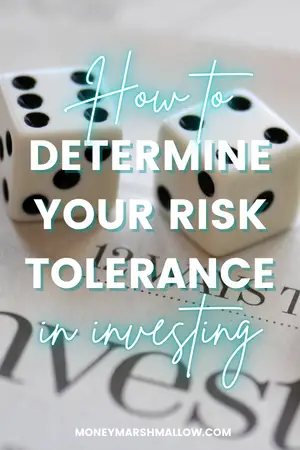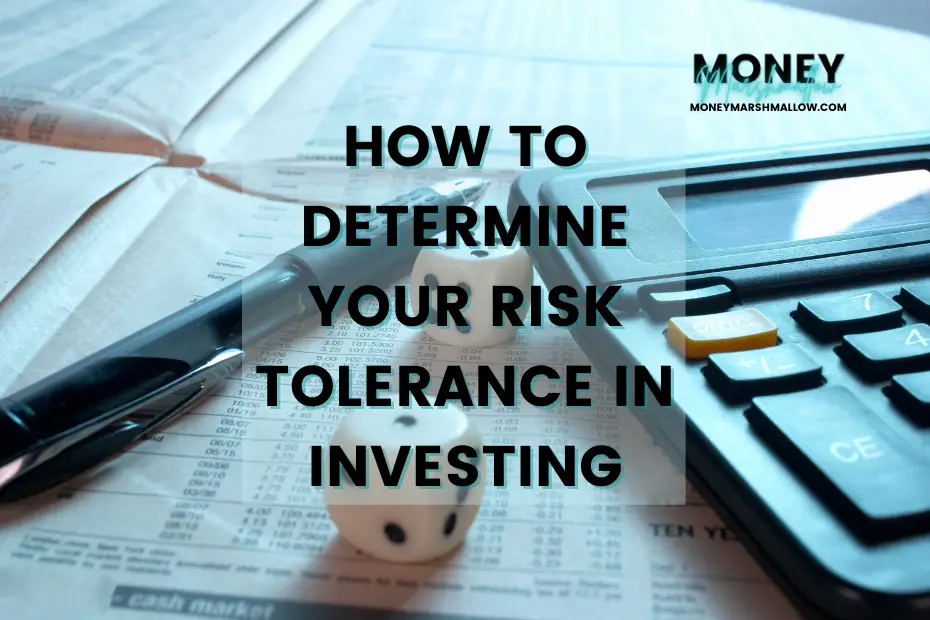“All investments carry some degree of risk” is a familiar phrase to many. But how much risk can YOU tolerate?
In this post, we’ll discuss what risk tolerance in investing means and how to determine your own risk tolerance level. This will then help you find investments that are suitable for your and your individual tolerance level.
Determining your risk tolerance
Many investors have had to concretely face the risks of investing for the first time during the past year or so. The stock prices have fallen and the market has experienced unstable times in all aspects.
The current market conditions have offered investors an opportunity to examine their own risk tolerance. Evaluating your own risk tolerance is a key part of creating an investment plan and making calculated investment decisions.
The risk tolerance of an individual investor can be understood from a psychological and financial point of view. Let’s explore how you need to take these into consideration when determining your own risk tolerance level.
Psychological risk tolerance
From a psychological point of view, your tolerance level is how well you manage the uncertainty associated with stock market fluctuations emotionally. Or simply put, the level of risk you are willing to take. This psychological aspect is entirely subjective.
Risk can mean opportunity, excitement or a shot at big gains. But it’s also about tolerating the potential for losses, the ability to withstand market swings and the inability to predict what’s ahead.
Observing your own state of mind in these unstable times is an easy way to assess your own psychological risk tolerance level. If you are investing already, think about how you feel now that the markets are down. Does checking your brokerage account frequently and seeing numbers in the red stress you out? Are you rushing to sell your investments when values are declining? Or are you confident that the markets will eventually recover along with your wealth?
Financial risk tolerance
From a financial point of view, risk tolerance is primarily linked to how and when the invested funds are to be used. You could also call this the risk capacity. Unlike psychological risk tolerance, risk capacity is more flexible and changes depending on your personal and financial goals, and your timeline for achieving them.
Your financial risk tolerance is likely higher when you invest money that you don’t have a particular need for in the near future. On the other hand, if you invest money that you plan to use in the future, to buy a property, for example, your risk-bearing capacity is significantly lower.
If you have a mortgage, your own business and are about to start a family, your financial risk tolerance is likely to be lower than if you’re single without any major financial obligations.
A job loss or another financial shock can also affect your investment decisions by altering the amount of risk you’re able to afford.

Risk tolerance and financial goals
When figuring out your risk tolerance, it’s also important to understand your financial goals. Your goals will determine how much time you have to grow your money, and therefore how much risk you can take on with the assets you choose. You might want to ask yourself what you’re saving for when you hope to withdraw some or all of the money.
A goal like saving for retirement has a longer time horizon than saving for a wedding or a house deposit. Generally speaking, the longer your timeline, the more risk you can take; your money would have more time to recover if there was a significant drop in the market. As you near your goal, you may want to reduce your risk and focus more on preserving what you have—rather than risking major losses at the worst possible time.
One way to fine-tune your investment strategy is by dividing your investments into buckets, each with a separate goal.
How to find investments to match you risk level
Once you know how to determine your risk tolerance and understand how much risk you are willing to take, it’s time to find investments that fit your tolerance level.
When it comes to funds, the risk classification of the funds helps investors choose an investment that match their individual risk tolerance. The risk rating describes the riskiness of the fund on a scale, for example from 1 (lowest volatility) to 7 (highest volatility). The rating scale can somewhat vary depending on an investment platform. But the higher the risk category number, the riskier the investment is.
On a scale from 1 to 7, equity funds typically belong to risk category 6. However, equity funds that invest in more volatile markets, such as Eastern Europe or Latin America, usually belong to risk category 7.
Funds with the lowest risk classification typically invest in the low-risk sectors. An example of this is the money market which usually aims to provide returns similar to those available from deposit and savings accounts.
Combined funds containing fixed income and equity investments, mainly belong to categories 3-5, depending on how many equity investments they contain.
A higher risk is typically associated with better returns. If things go better than expected, there are more opportunities for positive surprises in the higher-risk areas.
More help to determine your risk tolerance
If you feel like you need further support to figure out how to determine your risk tolerance before investing, you might find talking to a financial professional, such as a financial advisor, useful.
Alternatively, you could try online risk assessment tools or Robo-advisors to get started. Robo-advisors, allow you to put your investments on autopilot. You can indicate your risk tolerance and the robo-advisors will rebalance your portfolio for you based on how much risk you want to assume, market conditions and other factors. This more removed approach to investing could help quell some of your stress if you have a lower risk tolerance and are afraid of making an investment mistake that could result in a loss.
Related: Investing for Beginners: How to Start Investing in the UK

